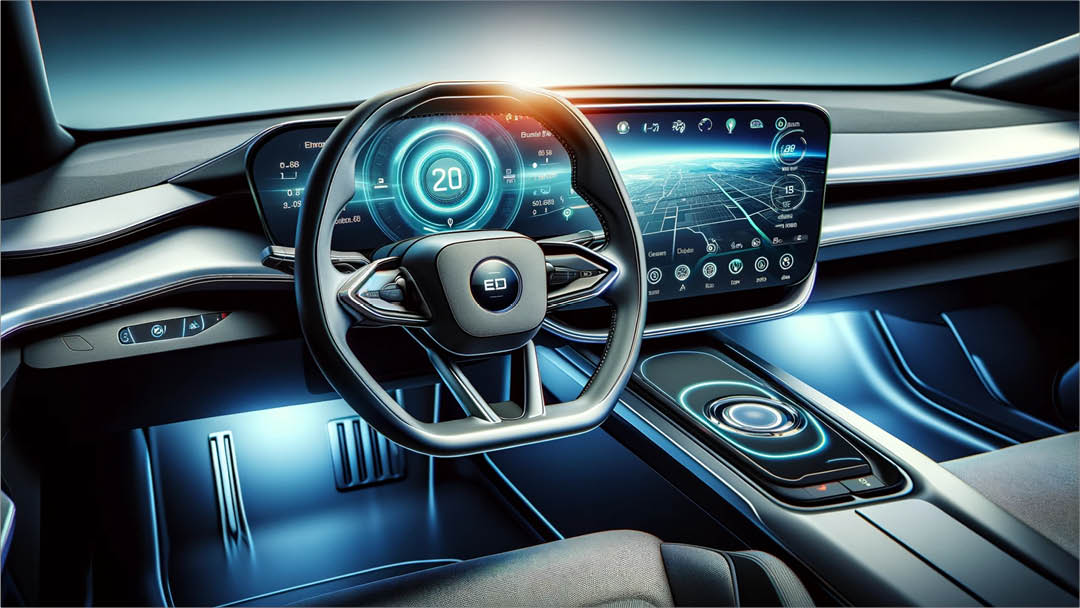In Brief
- Telematics is revolutionising the automotive industry by making vehicles smarter, safer, and more efficient.
- Acsia offers cutting-edge telematics solutions, addressing core technologies, flexible platforms, and advanced focus areas for innovation.
- The telematics market is surging, offering benefits for individual drivers, commercial fleets, and even insurance companies.
- Key areas of focus for us include multicore processors, model-based development, reusable frameworks, and cloud container solutions.
The automotive industry isn’t just about sleek design and horsepower anymore – it’s about intelligence. Telematics, the convergence of telecommunications and informatics in vehicles, is fuelling a revolution in how we interact with our cars. At Acsia, we’re at the forefront of this transformation, delivering comprehensive telematics services that make vehicles smarter, safer, and more efficient than ever.
Understanding the Foundations
Telematics isn’t magic. It relies on a robust technological foundation. Let’s break it down:
- Core Telematics: Think of this as the nervous system of the connected car. Global Navigation Satellite Systems (GNSS) pinpoint a vehicle’s location, while advanced cellular technologies (5G NAD, LTE) ensure constant communication. Vehicle-to-everything (V2X) protocols allow cars to “talk” to each other and surrounding infrastructure, boosting safety and traffic efficiency.
- The Platform Matters: Picture the platform as the brain of a telematics system. System on Chips (SoCs) seamlessly integrate various components. Meanwhile, the choice of operating system – Linux, Android, or QNX – dictates how seamlessly applications are created and deployed.
- AUTOSAR vs. POSIX & Linux: AUTOSAR has been a traditional industry standard for automotive software, but open-source systems like POSIX and Linux offer a more modern and agile approach. Acsia understands the unique advantages and challenges of both environments, enabling us to provide the best fit for our clients’ needs.
Where We Excel: Telematics Technology Focus Areas
Acsia doesn’t just offer the basics; we relentlessly innovate to stay ahead of the curve. Here’s what sets us apart:
- Multicore Processors: Vehicles are processing more data than ever. Multicore processors are a must to handle the load, enabling real-time analytics and decision-making.
- Model-Based Development: This approach streamlines telematics software creation using intuitive models rather than raw code. The result? Faster development, greater reliability, and easier updates.
- Reusable Frameworks: Why reinvent the wheel? Reusable code libraries dramatically accelerate the creation of bespoke telematics applications.
- Cloud Container Solutions: Imagine telematics applications that can seamlessly scale and adapt on demand. Cloud container solutions make this a reality, optimizing performance and cost-effectiveness.
The Benefits: From Convenience to Cost Savings
Telematics may be complex behind the scenes, but the advantages for drivers and fleet managers alike are clear:
- Real-time Diagnostics: No more mystery warning lights. Get alerts on potential issues before they leave you stranded on the side of the road.
- Optimised Routing: Intelligent routing considers traffic, weather, even fuel efficiency, helping you get there faster and cheaper.
- Predictive Maintenance: Telematics helps you schedule service proactively, avoiding costly breakdowns and downtime.
- Enhanced Safety: From driver behaviour monitoring to collision alerts, telematics systems actively work to keep you safe.
Telematics: A Market on the Move
The telematics market isn’t just about technology; it’s about tangible value. Experts predict exponential growth as benefits reach a wider audience:
- Individual Drivers: From real-time diagnostics and optimised routing to driver behaviour monitoring for insurance savings, telematics offers everyday advantages.
- Fleet Managers: Telematics is a boon for fleet operations, enabling predictive maintenance, improved route efficiency, and enhanced driver safety, translating directly to cost savings.
- Insurance Providers: Telematics data fuels “usage-based insurance,” allowing providers to tailor premiums based on real driving habits.
Acsia: Your Telematics Partner
Connect with us now to embrace the future of connected vehicles.










